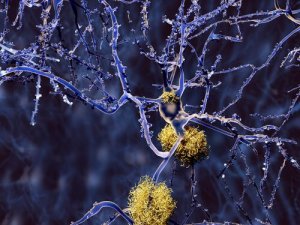Non-Alzheimer’s Types of Dementia

The changes in the brain that cause Alzheimer’s disease aren’t yet well understood. This lack of information might be why people mistakenly relate different types of dementia to this disease.
Today, we’d like to clear up some of the confusion.
Some facts about Alzheimer’s
The first symptoms of Alzheimer’s are well known: difficulty remembering names and recent conversations. However, as the disease progresses, such signs also worsen.
Subsequent symptoms include difficulty communicating, changes in behavior and judgment, and even trouble when eating or walking.
A person’s risk level for Alzheimer’s and other types of dementia is often considered bad luck with respect to genetics in most cases.
Alzheimer’s isn’t the only cause of dementia, but it is the most common one. That might be why it gets confused by nearly everyone.
Do you want to know more? See: Exercises to prevent Alzheimer’s
Non-Alzheimer’s types of dementia

1. Vascular dementia
This involves reducing blood flow to the brain due to a clot or a blockage of blood vessels.
Among the types of dementia, this one can cause strokes. Its most common characteristic is difficulty planning and organizing.
Take care of your heart health. You should avoid any hardening or obstruction of blood vessels. This means keeping your cholesterol and blood pressure stable.
Plus, the same care will also help you avoid getting diabetes.
2. Dementia with Lewy bodies

Of the types of dementia, this one is the most similar to Alzheimer’s.
However, where they differ is that the former causes disturbances in sleep, hallucinations, and muscular rigidity. Thanks to this, the effects also resemble Parkinson’s disease.
When patients with dementia with Lewy bodies go to a familiar place, they may feel lost because they’ve forgotten those sites that they once knew well.
Once a person reaches the advance stages of dementia, they may become lost just looking for the bathroom or even their own bedroom.
Of the most common types of dementia, dementia with Lewy bodies comes in second place. Alzheimer’s continues to be the most common type so far.
Keep your brain active to avoid this problem. Learn to speak a new language, get to know the history of new places, or do some research on foreign cultures.
High educational levels and stimulating your brain with hobbies can help prevent the symptoms.
3. Dementia caused by Parkinson’s disease
When the alpha-synuclein clumps that we talked about above collect in a part of the brain known as the substantial nigra, they damage the nerve cells that produce dopamine.
Specialists believe that this is when problems form that are associated with movements, which is a characteristic of Parkinson’s disease.
It’s also accompanied by tremors and having to move very slowly.
The worrisome thing about Parkinson’s disease is that no known cause has been determined yet to help people prevent this type of dementia.
4. Frontotemporal dementia

People who suffer from this type of dementia may become impulsive. They may make large purchases without consulting their spouse, for example.
Unfortunately, this type of dementia has no medication to control it. Therefore, it’s important to adopt a healthy lifestyle to reduce injury or possible strokes.
Don’t forget to read: How we age by gender
5. Mixed dementia
After all that we’ve talked about so far, to make matters worse, a person could also have a blend of different changes in their brain at the same time.
This is known as mixed dementia, which is typically a combination of vascular dementia and Alzheimer’s disease.
It’s best to keep your brain active and avoid any of the risk factors. It might sound complicated, but it is possible.
All cited sources were thoroughly reviewed by our team to ensure their quality, reliability, currency, and validity. The bibliography of this article was considered reliable and of academic or scientific accuracy.
- Capriotti, T., & Terzakis, K. (2016). Parkinson Disease. Home Healthcare Now. https://doi.org/10.1097/NHH.0000000000000398
- Nestor, P. J. (2017). Frontotemporal dementia. In Dementia, Fifth Edition. https://doi.org/10.1201/9781315381572
- Perry, D. C. (2014). Dementia. In Encyclopedia of the Neurological Sciences. https://doi.org/10.1016/B978-0-12-385157-4.00476-0
- Reitz, C., Brayne, C., & Mayeux, R. (2011). Epidemiology of Alzheimer disease. Nature Reviews Neurology. https://doi.org/10.1038/nrneurol.2011.2
This text is provided for informational purposes only and does not replace consultation with a professional. If in doubt, consult your specialist.








